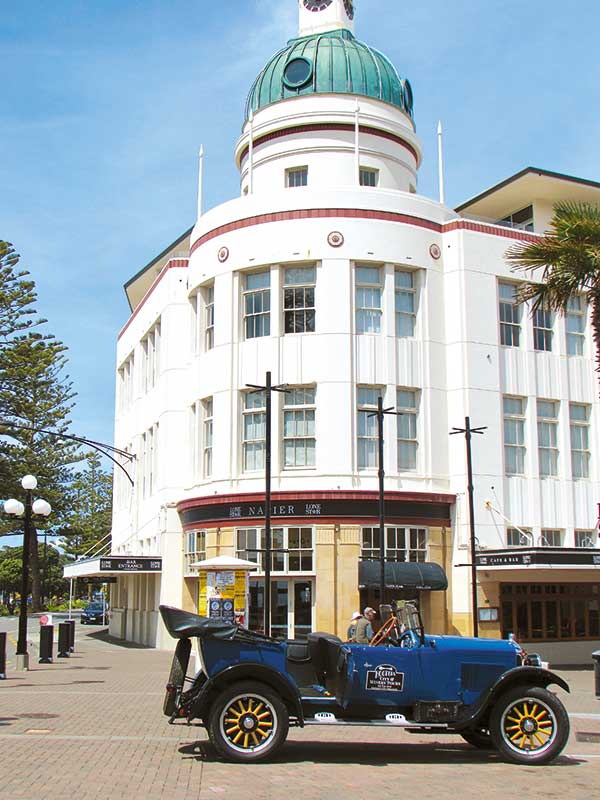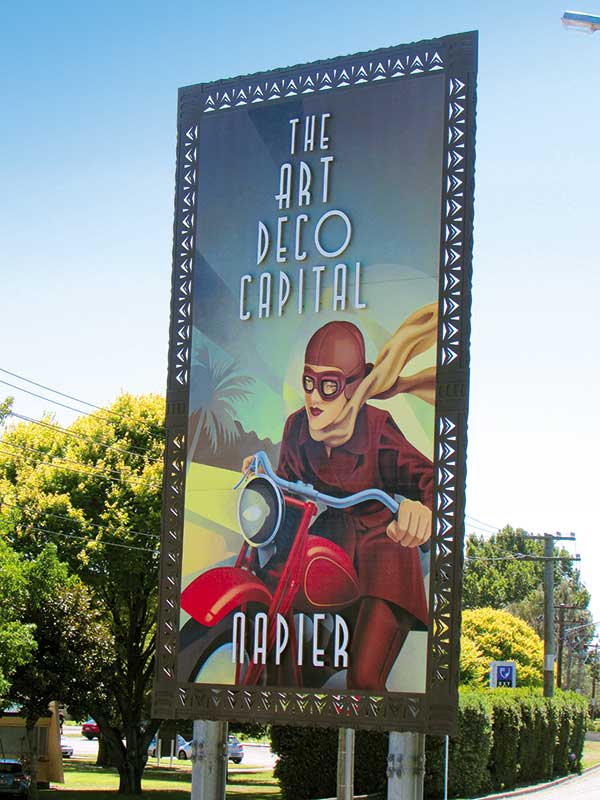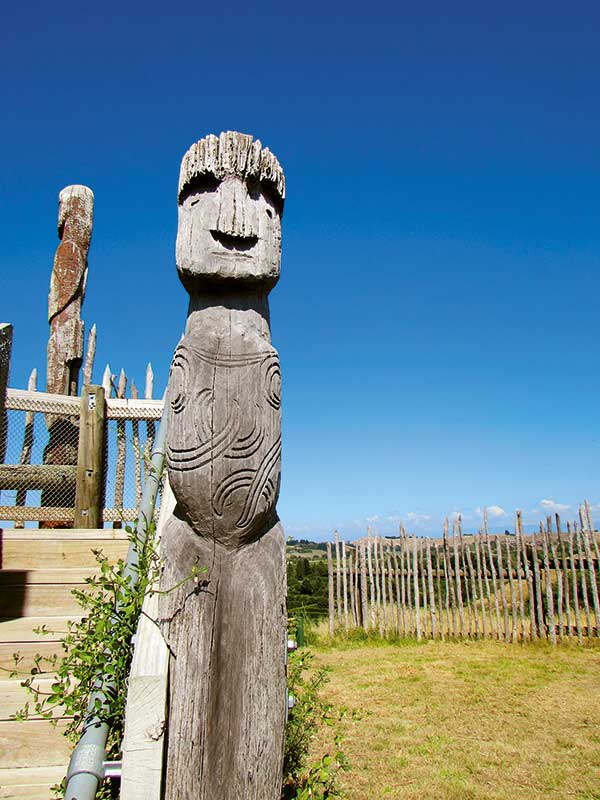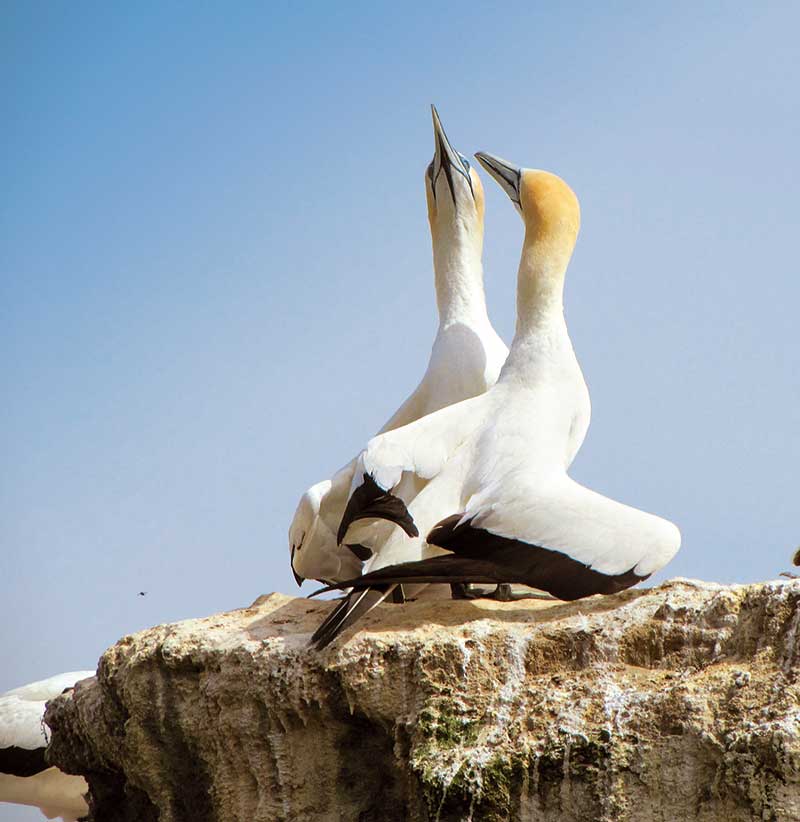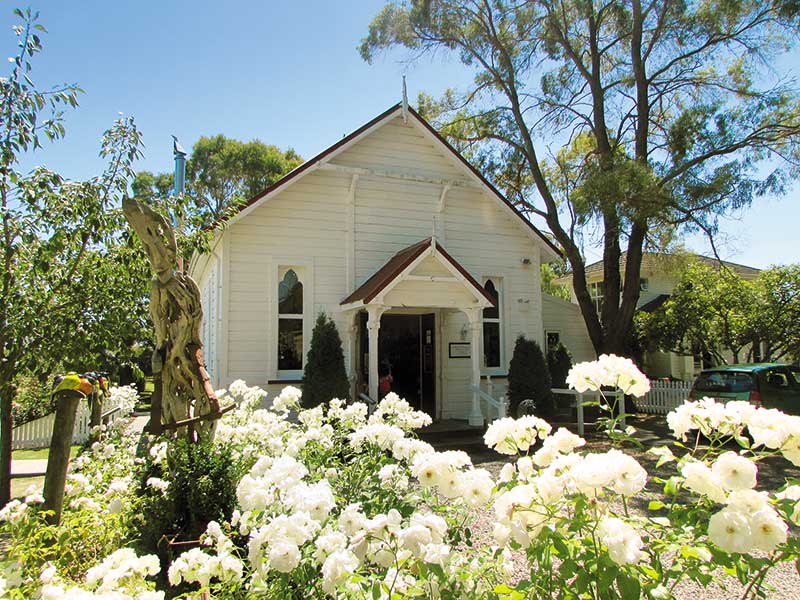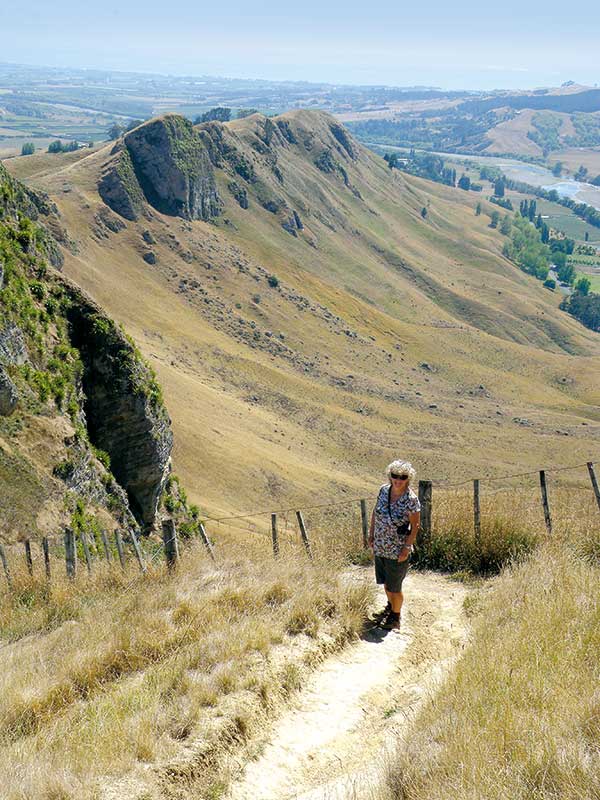Captain Cook and his crew were the first Europeans to see the Bay, named by Cook after the First Lord of the Admiralty, Sir Edward Hawke. It was on Cook’s 1769 expedition that Cape Kidnappers was named too. A Tahitian servant boy was briefly captured by the local Maori but escaped when the crew of the Endeavour opened fire. Maori mythology describes the Cape as Te Matau a Maui, Maui’s fishhook, which he used to haul up the North Island from the ocean bed.
Hawke’s Bay’s dry, temperate climate led to the region becoming renowned for its orchards and vineyards. Early missionaries first planted grapes in the region, which now boasts around 75 wineries which make up 80 percent of New Zealand’s Merlot, Cabernet Sauvignon and Syrah grapes plantings.
The twin towns of Napier and Hastings are the largest in the Hawke’s Bay. Long a site of Maori villages and fortifications, Napier began to be developed after 1851. Hastings was laid out two decades later and at the time of the 1931 earthquake, both towns had a similar populations. The earthquake of 3 February decimated both townships, levelling buildings and causing large areas of land, much of it coastal lagoon, to rise. After the tragedy both towns, but particularly Napier, were rebuilt in the fashionable style of the era, art deco.
There are daily guided walks and vintage car or bus tours to discover the distinctive buildings in Napier’s art deco historic precinct but we just walked around admiring the architecture. The area is roughly three blocks square and is interspersed by street art, sculpture and fascinating shops and cafes. It is an easy place to spend a few hours.
Along Napier’s waterfront, Marine Parade, there is the soundshell, the sunken garden, and the Pania of the Reef statue to admire. One of Napier’s most photographed attractions, the statue commemorates the Maori legend of Pania who was one of the sea people but married a mortal, Karitoki. Punished for her behaviour, she was transformed into a reef. The legend was perpetuated when the statue was presented to the city in 1954. Pania’s face was modelled on a local girl, May Robin.
Further along the Parade, the art deco-influenced Spirit of Napier features the form of a young woman reaching upwards, representing Napier rising from the ashes of the earthquake. In a similar vein, the bronze statue, A Wave in Time on Emerson Street, features Sheila Williams who led the New Napier Carnival in 1933.
There are over 200 kilometres of cycle trails in Hawke’s Bay and we rode quite a few of them. From Marine Parade north we took the ‘water ride’ which takes in the cafes of Ahuriri’s waterfront and the pretty seaside settlement of Westshore before looping back through the wetlands of Ahuriri. It is amazing to think that prior to 1931, when the land was uplifted, the wetlands were part of a lagoon where the locals fished and sailed.
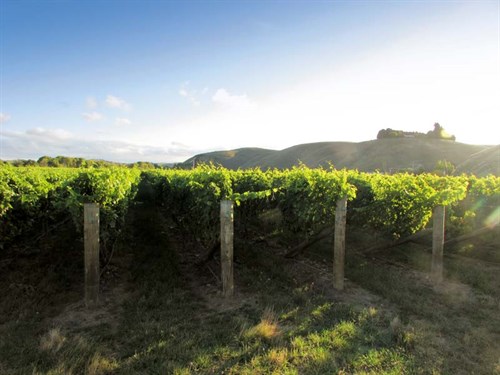
Cycling south another day we headed towards Cape Kidnappers on the ‘landscapes ride’. This passes the mouths of the Tutaekuri, Clive and Tukituki rivers and associated wetlands before terminating at Clifton at the base of Cape Kidnappers. Highlights of this ride were morning coffee under the vines in Clive, and a wine tasting and a long afternoon at Clearview Estate.
The ‘wineries ride’ from Fernhill (where we were parked amidst vines at a friend’s neighbour’s place) was more of a problem. Its full circuit is 47km but we found a tasting of six wines at Unison Vineyard, followed by a cycle to Ash Ridge where we had lunch and shared another bottle, was as much as we could handle and we wobbled home.
Probably the most scenic ride was the Puketapu loop which runs alongside the Tutaekuri River past orchards, vineyards, and through shady woodland. At the Taradale end of the loop we came to Otatara Pa Historic Reserve. Comprising of an upper pa, Hikurangi, and a lower palisaded one, Otatara, this site is known as one of the most outstanding complexes in New Zealand. It takes an hour to walk around the pa where there are the sites of dwellings, food storage pits, and gardens. The Otatara site has palisades to convey a sense of how it would have been fortified. The views were stunning – we could see across to Napier and Cape Kidnappers. The agricultural land spread below us was once part of the extensive lagoon that stretched to Ahuriri.
Interspersed with cycling, we took in some of the area’s amazing walks. Cape Kidnappers is famous for its gannets; it has the largest nesting area in the world. The gannets return each year to nest at the Cape, pairing for life and rearing one chick each season. There are tours, along the beach by tractor, and overland by coach, but we took the walking option along the beach. This trek takes around six hours return and must be coordinated with the tides as it is only possible at low tide.
The walk passes beneath towering cliffs which vary in age from 300,000 to 4.5 million years. The bands of strata include shellfish fossils, conglomerates of pebbles, and windblown ash and pumice. Deep canyon-like gullies punctuate the cliff face at intervals. Around two-thirds of the way into the walk, the beach scenery changes, there are rocky islets and an area known as black reefs. There are colonies of gannets here and it is easy to get very close to them. After two hours of walking we came to the picnic area and it is a steep half-an-hour’s walk up to the plateau from here. But what a sight! There are colonies of gannets on the plateau and surrounding flat areas of cliff. Oblivious to observers, they take off and land, preen and squabble, feed their young, and court their mates. The walk would be good without the gannets but they make the experience unique.
Another iconic walk in the region is Te Mata Peak, five minutes’ drive from Havelock North. It is possible to drive or walk to the summit but we took one of several loop walks from the bottom car park up to the trig on the 399-metre-high summit. Our track passed through soaring redwoods before zig-zagging its way up a steep ridge to the top. The 360-degree views were amazing – hazily, we could even see, Mt Ruapahu, 150km away.
Never miss an issue of Motorhomes Caravans & Destinations magazine. Subscribe here.

